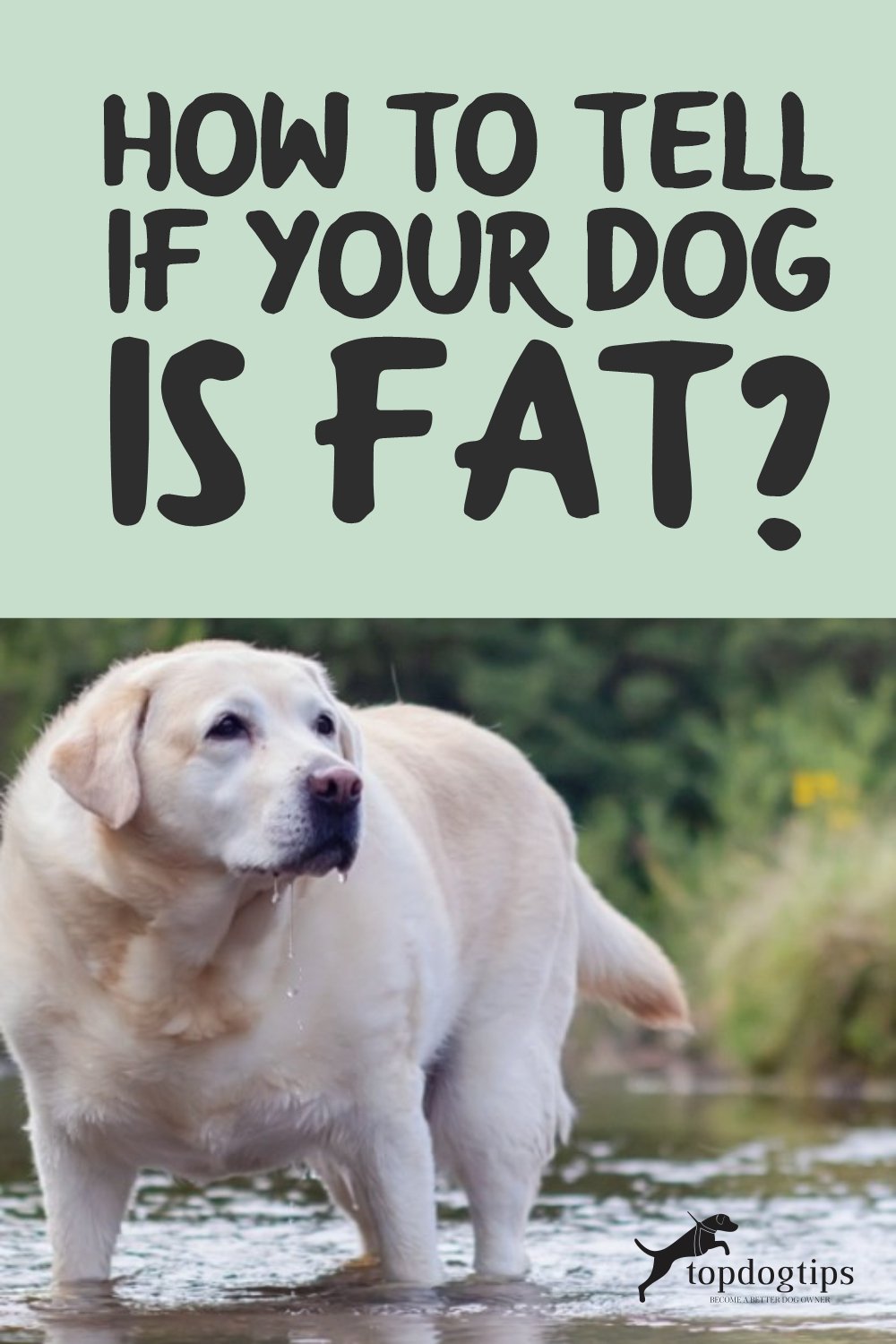In recent years, we've seen a terrible trend in the growing obesity of our pets.
Sadly, studies show that canine obesity has become an epidemic, with the average weight of pets consistently on the rise.
Knowing how to tell if your dog is fat is an important part of pet ownership.
Obese dogs are most likely to suffer from breathing issues, diabetes, arthritis, and other hip and joint problems.
The good news is that your dog's weight is 100% in your control.
If you've been wondering if your dog is overweight, now is the time to figure it out and get his growing girth under control.
A dog’s body is built to carry only a certain amount of weight, and any extra pounds place a higher demand on both the organs and the skeletal system.
One of the reasons we're seeing an obesity epidemic with pets is that owners incorrectly assess their dog's weight and body condition.
Recent studies show that proper assessment can increase lifespan in dogs and lead to better overall health.

How To Tell If Your Dog Is Fat?
Let me first begin by stating that it is always best to ask your veterinarian for expert advice on the ideal weight for your dog.
However, as a starting point, it is not difficult to get a reasonable idea of your pet’s weight by using a BCS chart (Body Condition Score) and doing a simple physical examination yourself.
A dog in good condition should have a slightly ‘hour-glass’ shaped figure below the ribs.
Feel along Fido's chest – if you can easily feel the ribs down the side of the chest, then there is obviously no extra fat on them.
You should be able to distinguish between the dog’s rib cage and his abdomen, and the abdomen should taper in slightly.
If you can’t feel the ribs, your dog's waist is flat or looks bloated, or his stomach is dragging when he walks, then it’s time for a change in his lifestyle and eating habits.
You can see the body condition score chart used by the World Small Animal Veterinary Association below for a visual guide to what your dog's body should look like from above.
There are certain risk factors that may cause your dog to be at a higher risk of obesity.
These factors can include his breed, regular diet, age, and whether or not he is neutered.
If your dog falls into a higher-risk category, it is especially important that you stay on top of his physical condition.
Vets confirm that dogs are considered overweight when their weight is more than 15% above ideal.
A canine is considered obese when his weight is more than 30% of ideal.
Dogs can be put on a diet, and there are many ways to do so.
It's best to work with a canine nutrition specialist, whether it's your vet or a licensed canine nutritionist, to create a diet plan for your pet that will meet all of his nutritional needs without depriving him of any dietary requirements that his body needs to function.
In addition to a diet, a well-structured exercise routine is essential to help shed extra pounds and get your dog back in shape.
Your vet can also guide you in making an exercise plan for your pooch.
Depending on how overweight and out of shape he is, you'll probably need to start slowly with brief walks and work your way up to more strenuous exercise.
Managing your pet's weight is crucial.
If your dog is overweight, it is absolutely essential to get him on a healthier path, or he'll likely end up suffering health issues that could have been prevented.
If you continue to allow your pet to stay overweight, it will take years off his life and lower the quality of life that he has while he's here.
READ NEXT: The Risks of Canine Obesity and How To Keep Your Dog Fit
Want To Share This…















